net.art
Archived Posts from this Category
Archived Posts from this Category
Posted by ben on 27 May 2009 | Tagged as: conceptual art, net.art
I noticed today (via AFC) that there’s an On Kawara Twitter account which announces “I AM STILL ALIVE #art” every day. Then I noticed that the announcement is made every day at 11:55 AM, and that it is posted via a Perl script (Perl Net::Twitter). As it happens, last night I was flipping through , and I came across On Kawara’s postcard project, in which he sent the time he woke up each day stamped on postcards (this went on for 4 months):
Nov – 1 1969 I got up at 4.28 P.M.
Nov – 2 1969 I got up at 3.13 P.M.
Nov – 3 1969 I got up at 1.15 P.M.
…
Given the personal nature of this work, I figured either this isn’t On Kawara’s Twitter account or he is seriously changing up his working methods. A Google search later, I find the confession:
The conceptual artist On Kawara has 101 followers on twitter at the time of this writing. I have only 20-something. But I am On Kawara on twitter. Or rather, On Kawara on twitter is a Perl script that gets automatically run once a day on a server in a cabinet in my living room. I haven’t done anything to publicize his activities on twitter. All he does is announce, “I AM STILL ALIVE” once a day. He doesn’t follow anyone. Yet, somehow, it seeped out into the twitter community. The “Perl Net::Twitter” client name should be a dead give away.
The interesting thing about this (and my original reason for launching it) is that it blatantly negates the whole idea behind On Kawara’s “I AM STILL ALIVE” messages. Whereas those did indeed confirm that he was still alive, this doesn’t. It’s an automated process that he doesn’t even control. Were he to die, he would continue to announce “I AM STILL ALIVE”, everday, on twitter. So it really does two things; by falsely confirming that he is alive, it casts doubt on the issue but it also keeps the notion of him actively announcing that he is alive, alive.
Posted by ben on 10 Jul 2008 | Tagged as: adventure day, design, graffiti, net.art, photography
An old friend sets out to chronicle New York City through its ATMs on a new blog, aptly titled :

UPDATE: ATMNYC’s author writes:
The photos on atmnyc are taken with my iphone and then emailed directly to the tumblr blog. So the pictures are all snapped and posted in almost the same instant. I like to think of it as a sort of updated polaroid style. The limits of the iphone camera, the problems with focus, the tendency to blur and glare, even the dimensions of the photo, actually remind me a lot of the old Polaroid Land Camera.
I do not photograph any indoor atms unless they are visible from the street. I take many of the pictures quickly from my bike. I make little effort at composition— the city takes care of that part itself.
I used to hate the sight of atms, thinking that they were a regrettable intermediary techno clutter, not unlike the cell phone towers tacked onto so many historic Manhattan apartment buildings. On the other hand I find payphones charming, perhaps because they are nearing their obsolescence. Likewise, New York’s rooftop water towers are beautiful appendages, so maybe cellphone towers should be indulged as well.
In any case, I’ve become fond of atms, and have come to see them as helpful little droids, standing on corners blinking their senseless cyclopes eye, waiting patiently to serve the needs of a passing master– for a small fee, of course. In the meantime they are heaped with every abuse offered by graffiti, violence and the weather.
But despite my growing sentimentality for the things, I still get my cash from the teller at a local branch bank.
Posted by ben on 31 Mar 2008 | Tagged as: design, net.art, photography, poetry, politics
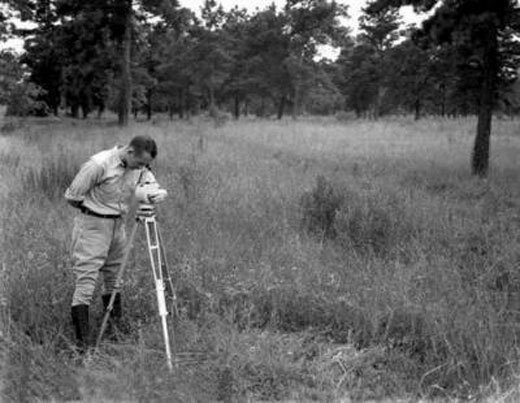
is a new blog by an old friend and occasional collaborator, publishing research he has conducted over the past year or so. You may find that it bears a certain affinity to Emvergeoning’s comment section, being a poetic collage of anachronistic media. Enjoy.
Posted by ben on 20 Aug 2007 | Tagged as: net.art, silliness
Posted by ben on 29 Jul 2007 | Tagged as: net.art, r.i.p.
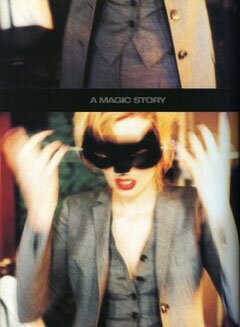 Just like everyone else, I don’t really know what to make of the Theresa Duncan apparent suicide and the Jeremy Blake disappearance (which is widely assumed to also be a suicide). The MSM is not offering much in the way of confirmed facts. And some of these “facts” appear to be speculation or exaggeration. The whole thing seems very fishy, and responsible news organizations would be wise to steer clear of the whole mess until the facts are known. Needless to say, Emvergeoning is not a responsible news organization.
Just like everyone else, I don’t really know what to make of the Theresa Duncan apparent suicide and the Jeremy Blake disappearance (which is widely assumed to also be a suicide). The MSM is not offering much in the way of confirmed facts. And some of these “facts” appear to be speculation or exaggeration. The whole thing seems very fishy, and responsible news organizations would be wise to steer clear of the whole mess until the facts are known. Needless to say, Emvergeoning is not a responsible news organization.
So, with all due respect to Ms. Duncan and Mr. Blake, I’m going to link you to some strange analysis of this case from Dream’s End. Even just looking at Theresa Duncan’s blog in a cursory manner, there is much to ponder. It just doesn’t add up.
I don’t have time to read, much less analyze all of this, and I really don’t want to seem disrespectful. At least one person is dead, possibly two, and all of this analysis may be focusing the wrong kind of attention on their lives and deaths. It’s just a very strange case, and I thought y’all would like to know about it. I’ll post updates, but probably not do much analysis. It’s just too complex, and I have too many other things to deal with.
Here are the posts at Dream’s End so far:
This is Not a Game: The Mysterious Death of Theresa Duncan, Part 1, Part 2, Part 4 (which also contains Part 3).
Edit: Ok, well, those Dream’s End posts do get pretty wacky, and some of connections being made there are kind ridiculous, but in a nutshell: something doesn’t add up here.
Posted by ben on 13 Jul 2007 | Tagged as: net.art
![]()
Via Andrew Sullivan I came across this cool NYT slideshow of people alongside their avatars on video games such as Second Life, City of Heroes, and EverQuest. A surprising number of them are accurate self-portraits (minus a few pounds, of course); but there a few cross-gender avatars and purely fantastical characters. Edward Castronova made a name for himself studying the economics of EverQuest; perhaps there’s a similar opportunity for someone to study the psychology of avatar construction. Oh wait…
Posted by michelle on 07 Jul 2007 | Tagged as: net.art
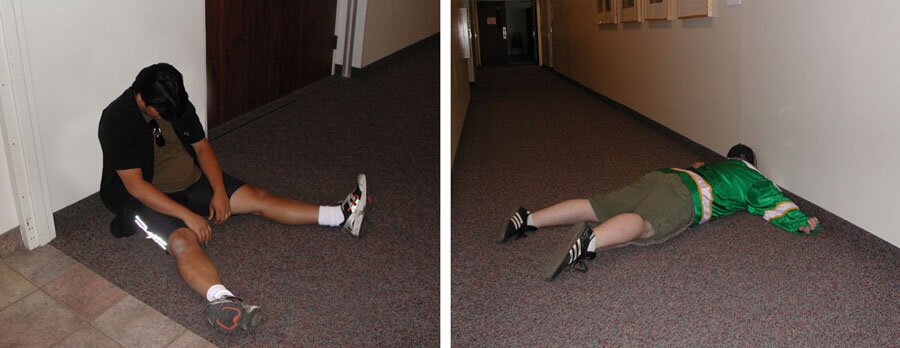
Taking the simpleton characters in repose that we find currently on display at the Bluestar, an artist from Amsterdam named Harm Van Den Dorpel {you heard me} offers an improvement upon a basic premise (make sure you roll over the person to activate the art). Check out the deconstruction of a horse and watch the limp limbs of a sleeping man take on a life of their own.
In other news, Work has a nice, serialized collection of skull art currently on display.
If you skipped the art walk yesterday beneath a light rainfall, well, you didn’t miss much. Robot Art Gallery had a half assed show that wasn’t even installed yet at 645pm opening night. Oops. Add the conspicuous absence of appetizers and drinks and it seemed like a disaster. El Sol Studios outshines all other tiny art spaces down Alamo Street with an interesting, colloidal, monochromatic foam installation. Make sure to catch this show, which is an anomaly from their conventional painting exhibitions.
Posted by ben on 09 Jun 2007 | Tagged as: design, net.art

Susan Kare’s design work may look dated in this age of endless gradients, transparent drop shadows and candy-coated buttons, but she had an immeasurable impact on early computer-based graphic design. As the designer of many of the key icons and fonts on the early Macintosh operating system, as well as icons and other visual elements for Windows 3.0 and OS/2 Warp, pretty much anyone working on a graphical operating system in the eighties was looking at her designs day in and day out. Kare’s font Chicago was used as the default font for menus and dialogue boxes on the Mac OS up through System 7, and then was later revived for the early (pre-Photo) versions of the iPod. She even designed Clarus the Dogcow.
Posted by ben on 14 May 2007 | Tagged as: in yo face, net.art
Here’s some interesting research on how emoticons are constructed and interpreted in different cultures. The key lies in whether we look primarily to the eyes or to the mouth when deciphering emotions.
Posted by ben on 12 May 2007 | Tagged as: comics, mustaches, net.art
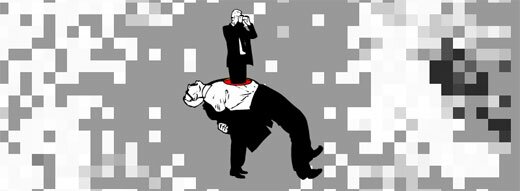
Nails is one of the more successful Flash-based net.art projects I’ve come across. This unnerving yet hilarious series of dada self-portraits by Han Hoogerbrugge has been running since 2002. This series grew out of Modern Living / Neurotica, which began life in 1996 as animated GIF loops, but later migrated into interactive Flash. Throughout both projects Hoogerbrugge uses a primarily grayscale pallet to illustrate various states of psychological tension through terse, punchy cartoons. The soundtracks are also particularly effective at creating eerie atmospheres which allow the little animations to get under your skin.
Posted by michelle on 28 Apr 2007 | Tagged as: net.art, poetry, possibilities
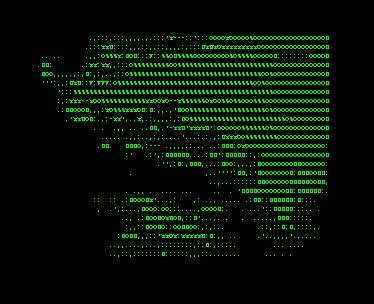
Seems like the Slovanians are onto something, in the case of a guy named Vuk Cosic and the ASCII Art ensemble, you can watch the opening scene of Psycho or perhaps a poignant scene from the brainy landscape of Eisenstein. These online creations remind me of concrete poetry and text as art or occasionally siphoned of meaning as in Magritte’s hypnogogic endeavors. Catalonian poet and Surrealist, Joan Brossa, left a legacy of visual poetry in various forms such as this:
Posted by ben on 26 Mar 2007 | Tagged as: net.art, silliness

For a little Sunday night / Monday morning fun, visit the Gallery of Regrettable Food. Plenty of unimaginable gelatin concoctions, absurd mystery ingredients, and heaping helpings of snarky commentary. (Hat tip: Andrew Sullivan)
Posted by ben on 15 Feb 2007 | Tagged as: music, net.art, sound art
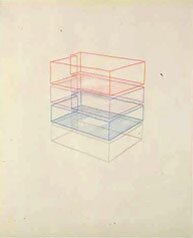 Max Neuhaus has been a visionary in the artistic use of sound for decades. In the 60s he worked with some of the most innovative musicians in America (Cage, Stockhausen, Feldman), and was a pioneer of “live electronic music.” But soon he sloughed off the constraints of traditional musical performance altogether. The limitations Neuhaus tore down include time-based sound composition and the separation of audience from performer. To free sound from the tyranny of time, Neuhaus developed the concept of sound installations, which work as audio sculptures to be experienced as spacial components of the environment (one of these pieces is located in Times Square, and maintained by the Dia Art Foundation).
Max Neuhaus has been a visionary in the artistic use of sound for decades. In the 60s he worked with some of the most innovative musicians in America (Cage, Stockhausen, Feldman), and was a pioneer of “live electronic music.” But soon he sloughed off the constraints of traditional musical performance altogether. The limitations Neuhaus tore down include time-based sound composition and the separation of audience from performer. To free sound from the tyranny of time, Neuhaus developed the concept of sound installations, which work as audio sculptures to be experienced as spacial components of the environment (one of these pieces is located in Times Square, and maintained by the Dia Art Foundation).
To break down the isolation of audience, performer, and composer, Neuhaus began to work on community-based sound compositions in the 60s. To do this, he connected two widespread audio networks: the telephone and the radio (apparently this was before the days of call-in radio shows). By putting ten telephone lines into a radio studio in New York, and developing a device to answer them and mix the audio, he created a sound piece in which the audience was the primary composer and performer of the work. He later convinced NPR to let him repeat the project across the nation in the late 70s. For Radio Net, Neuhaus connected 200 NPR stations, five of which were accepting calls. Over the course of two hours, ten thousand people participated in a nationwide audio loop.
His newest project flows out of these ideas of communities collaborating with sound, but moves the work to the Internet. With his Auracle website, Neuhaus has built both an instrument and a space within which to perform. Using a microphone, visitors can use their voice to control a sophisticated sound-creation tool. Your voice is analyzed by a JavaScript program on your computer, and certain gestural cues are sent to the server, which then sends them back to your computer to generate the sound. When you enter the website, you can set up virtual spaces (like chat rooms) in which you can perform with a group of other people. The sounds generated are ghostly electronic echoes, but in them can be heard the gestures of human speech. They are simultaneously mechanical and natural, robotic and organic. As Neuhaus says, “what these works are really about is proposing to reinstate a kind of music which we have forgotten about and which is perhaps the original impulse for music in man: not making a musical product to be listened to, but forming a dialogue, a dialogue without language, a sound dialogue.”
[Image courtesy Lawrence Markey Gallery]
Posted by ben on 03 Feb 2007 | Tagged as: art paparazzi, net.art
Let me start off this post by saying I’m grateful for all the things Artpace does for San Antonio, from the potlucks to the rooftop parties, but someone has to call them out on this one. When I heard that Jesse Amado was showing at Fine Silver, I thought “That’s strange; isn’t he showing at the Hudson Showroom? Isn’t it a bit of a faux pas for San Antonio’s two most reputable galleries to show the same artist at the same time?” So I decided to do a little fact-checking, only to find that the repo men have come to collect Artpace’s web site:

The Google cache of the site turned up the information I was after: yes, Jesse Amado is opening a show at Artpace on February 8 and Fine Silver on February 9. And I’m sure there’s a reasonable explanation for that. But the real mystery of the weekend emerges: Who killed the Artpace website?
Posted by ben on 15 Jan 2007 | Tagged as: net.art
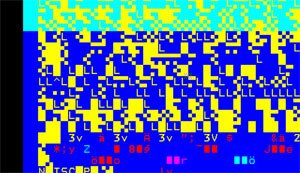 Since not too many people seem to be familiar with the net.art genre, I thought I’d link y’all up to one of the classics, Jodi.org. Jodi is a two-person artist collective that plays with perceptions of personal computers, often by either mimicking glitches or exploiting pre-existing bugs. Their web sites and programs are sometimes impossible to control, making a force-quit necessary (I lost an earlier version of this post when I had to shut down Firefox due to one of their web-shenanigans – turn of pop-up blocking if you want to check it out). They tend to use an aesthetic derived from the early days of personal computing, with lots of text-based layouts, and green-on-black or white-on-black color schemes. In recent years, they have done a lot with video games, either modifying popular games or posting glitchy screen grabs from actual game play. They also created a number of pieces using Google’s Blogger service. That should get you started, but if you want more Jodi, check their Wikipedia page for links to other pieces.
Since not too many people seem to be familiar with the net.art genre, I thought I’d link y’all up to one of the classics, Jodi.org. Jodi is a two-person artist collective that plays with perceptions of personal computers, often by either mimicking glitches or exploiting pre-existing bugs. Their web sites and programs are sometimes impossible to control, making a force-quit necessary (I lost an earlier version of this post when I had to shut down Firefox due to one of their web-shenanigans – turn of pop-up blocking if you want to check it out). They tend to use an aesthetic derived from the early days of personal computing, with lots of text-based layouts, and green-on-black or white-on-black color schemes. In recent years, they have done a lot with video games, either modifying popular games or posting glitchy screen grabs from actual game play. They also created a number of pieces using Google’s Blogger service. That should get you started, but if you want more Jodi, check their Wikipedia page for links to other pieces.
If you have a favorite net.art site, let us know in comments.